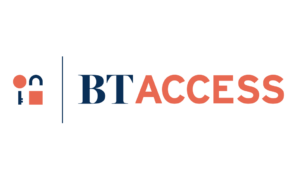I AM NOT ESSENTIAL
WRITTEN BY SHERRY DEUTSCHMANN
In the midst of the 2020 COVID-19 crisis, my current profession of author-speaker, and leader of a company that helps women-owned businesses reach the revenue benchmark of $1M, is considered non-essential. If you get Webster’s input on that, it means I’m not absolutely necessary and I’m not important. Where does your job fall in the “essential” and “non-essential” argument?
If there is a silver lining to the era in which we’re living, it might be in that the pedestal upon which we’re accustomed to placing tech geniuses, CEO’s, lawyers, stockbrokers, and political strategists is nowhere to be found. Instead, the “essential” folks are the clerks at our grocery store, those who are stocking the shelves with toilet paper and cleaning materials, those who are delivering our food and our mail, those hauling away our trash each week….and those facing down the deadly virus against which we are all fighting. But up until six weeks ago, how many of those individuals would tell you they felt invisible, that they didn’t really matter? Truthfully, how often did you even speak to them or notice them?
THIS SUDDEN TURNING-OF-THE-TABLES IS THOUGHT-PROVOKING.
All my adult life I’ve fretted over the hierarchical inequalities in our society. The stuff that leads to great disparities between what we pay our school teachers versus what we pay the women and men who entertain us through movies, sports and music. While I’d observed it for years, after I became an entrepreneur, one incident shaped my feelings about who is essential. Let me share that story with you, something that happened within my first company, LetterLogic.
For the first few years of LetterLogic’s existence, we didn’t need an org chart. There were just a handful of us, and we all knew our roles; we reported to each other. Having a flat organizational structure suited me just fine and was perfectly appropriate in our unusual employees-come-first culture.
As our company grew we realized we had to have an official org chart, a document that showed where each person fit, to whom they reported, and where to turn to escalate a matter if they weren’t getting what they needed from their supervisors. Our office manager/ human resources director created a traditional functional org chart based solely on titles. The resulting document stunned me, and not in a good way. When we were all assigned to spots on the chart, I as the CEO was at the top…but Patrick Johnson, one of the most valuable contributors (and one of the finest individuals I’ve ever known), was at the bottom. It bothered me so badly that I didn’t sleep that night.
LET ME TELL YOU ABOUT PATRICK AND YOU’LL UNDERSTAND WHY.
Founded in 2002, my company LetterLogic, which printed and mailed healthcare bills, grew quickly and started getting a lot of press about our culture – one in which the employees needs came before the needs of the customer or the shareholder. A few days after one such article ran, Patrick Johnson walked into our lobby for the first time. He had a depth of experience in the printing/fulfillment industry but we didn’t have any job openings at the time. Unbelievably, he was willing to work for LetterLogic without pay, just to help an organization that valued its people. He was sincere, but I couldn’t promote a “valuing our people” narrative while letting a person work without pay. I told him that I’d call when a position was available and we could afford him. That occasion came a few months later and it was my pleasure to hire Patrick.
Patrick proved to be an ideal coworker and team member. Even now, years later, I have a hard time describing him as an “employee.” His primary job was to operate the high-speed laser printers that produced the physical documents we mailed each day, but he eventually served as my mentor, the voice of reason, and our moral compass. I don’t know how he did it, but no matter how much we grew, no matter how much volume we added, he handled it. There was no drama and no fanfare, the work just got done. But that’s not all. With dignity and kindness and no ego, he quietly coached those around him. He absolutely led by example and proved to be the rock that we all leaned on in hard times.
Patrick was essential.
As our work load continued to grow and we had to expand to two shifts, Patrick volunteered to move to the night shift. That meant that he worked at night, in a 27,000-square foot factory. Alone. In so doing, he set us up for success every day. When the rest of us came to work each morning, Patrick had completed much of the printing needed for the day so we could then move the work through the additional steps and processes on time. He didn’t complain. He didn’t ask for more money.
Now, here I was looking at an org chart that put me at the top and Patrick, my mentor and invaluable team member, at the bottom. It wasn’t just words and boxes on a sheet of paper anymore. The visual story was a violation of everything I knew to be true—that we were all equally valuable and equally essential to producing a great service and product. I took the challenge to our office manager/human resources director and we came up an unconventional diagram that better showed how every person, regardless of title, was equally important. The result was an org chart that resembled a bicycle wheel, with the leadership team as the hub, and the spokes being the individual roles that actually produced our services. Take away a few of those spokes and the wheel would eventually collapse.
EVERY ROLE, EVERY PERSON PERFORMING THOSE ROLES MATTERED. THEY WERE ALL ESSENTIAL.
Another way we showed everyone that they too, regardless of title or role, were equally valuable, was in our one-of-a-kind profit sharing plan. Yeah, lots of companies have a profit sharing program, but not like ours. Our monthly distribution of 10% of the net profit was shared EQUALLY, regard of title or role. This means that our production team that worked on the factory floor received the exact same amount as the executive leadership team, demonstrating that they were just as essential when it came to profitability.
Within your own company, do you think the CFO is more important, more “essential” than your custodian? Yeah, well, just wait until weeks go by and no one has carried out the trash or swept the floors or unclogged that one toilet that always seems to be out of order. Yes, the CFO might be doing work that requires a degree – that requires an analytical mind that your common-sense-rules custodian maybe doesn’t have, but you need BOTH, don’t you?? Which one do you want to do without?
When our nation finally has a grip on COVID-19 and we all go back to work, back to “normalcy,” will we look at each other with a fresh understanding, appreciation and respect?
Let’s try. We’re all in this together. We are all essential.



